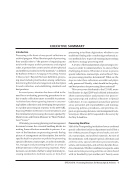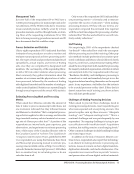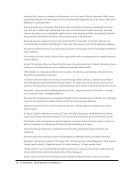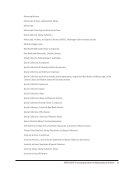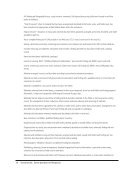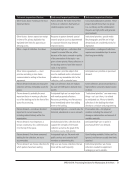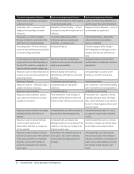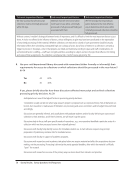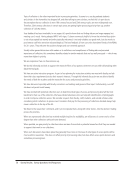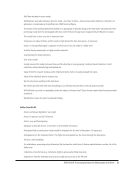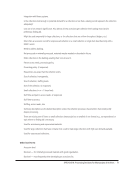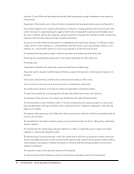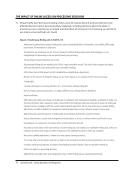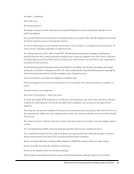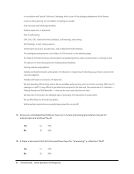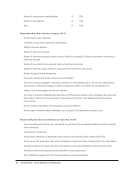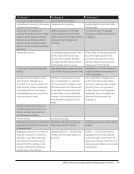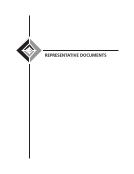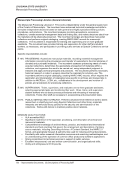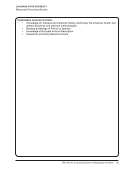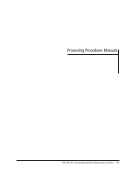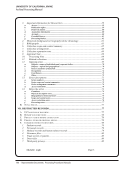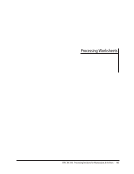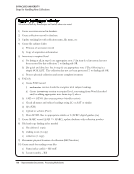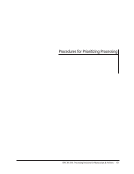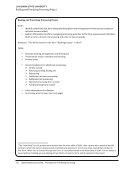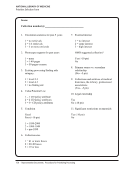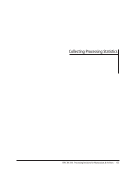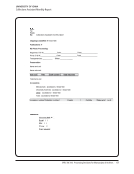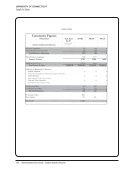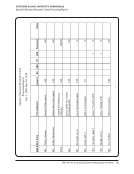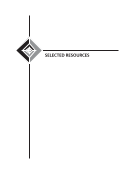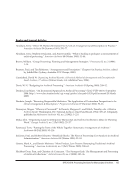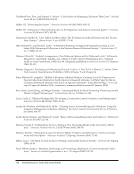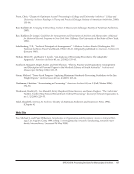70 · Survey Results: Survey Questions And Responses
Always—collection level in both EAD-encoded finding aids and at least collection level for corresponding MARC
records.
Archives: staff availability.
Awareness/publicity that the collection is available for research even though access may be inhibited by lack of
organization.
Backlog, staffing level, preservation risks.
Basic inventory.
Collection level description must suffice to provide patrons with a detailed description of the collection as a whole.
Collection of low anticipated use/demand may initially receive this level of description, with the idea that description
could be expanded upon at a later date if the materials are requested.
Collection size (small) or homogeneity.
Collections consisting of one folder or of less that ca. 10 boxes of homogenous material are described at this level.
Done at accessing.
Done for all.
Essential to the most limited access every attempt is made to create at least a rudimentary collection-level description
on accession.
Expected patron use.
Factors checked above are constantly applied against all levels.
Generally, a stopgap description only, made available only until the collection has been properly described. A few
collections will remain more or less permanently at the collection level, usually because they are not of sufficient
research value to warrant greater investment.
Give researchers a brief but comprehensive view of what the collection contains and does not contain.
Homogeneity of collection.
If a collection is small and homogeneous or of low research value, then we might describe at the collection level. A
collection-level description might be an initial, temporary description to let potential users know that we have the
collection. If we receive inquiries, we could then do additional processing.
If no register needs to be created, then there will only be a collection-level cataloging record. Usually, the collection is
small and contains only one or two series.
If the collection is small and the materials can be understood at an aggregate level without compromising access, then
we describe at the collection-level. Some minimally processed collections are done at the collection-level.
If we can provide some access with a collection level record we do that. Most often with collections that are
homogeneous in nature.
Immediacy of access.
Importance of materials and anticipated use.
Initial processing beyond accessioning and until full processing is possible.
Always—collection level in both EAD-encoded finding aids and at least collection level for corresponding MARC
records.
Archives: staff availability.
Awareness/publicity that the collection is available for research even though access may be inhibited by lack of
organization.
Backlog, staffing level, preservation risks.
Basic inventory.
Collection level description must suffice to provide patrons with a detailed description of the collection as a whole.
Collection of low anticipated use/demand may initially receive this level of description, with the idea that description
could be expanded upon at a later date if the materials are requested.
Collection size (small) or homogeneity.
Collections consisting of one folder or of less that ca. 10 boxes of homogenous material are described at this level.
Done at accessing.
Done for all.
Essential to the most limited access every attempt is made to create at least a rudimentary collection-level description
on accession.
Expected patron use.
Factors checked above are constantly applied against all levels.
Generally, a stopgap description only, made available only until the collection has been properly described. A few
collections will remain more or less permanently at the collection level, usually because they are not of sufficient
research value to warrant greater investment.
Give researchers a brief but comprehensive view of what the collection contains and does not contain.
Homogeneity of collection.
If a collection is small and homogeneous or of low research value, then we might describe at the collection level. A
collection-level description might be an initial, temporary description to let potential users know that we have the
collection. If we receive inquiries, we could then do additional processing.
If no register needs to be created, then there will only be a collection-level cataloging record. Usually, the collection is
small and contains only one or two series.
If the collection is small and the materials can be understood at an aggregate level without compromising access, then
we describe at the collection-level. Some minimally processed collections are done at the collection-level.
If we can provide some access with a collection level record we do that. Most often with collections that are
homogeneous in nature.
Immediacy of access.
Importance of materials and anticipated use.
Initial processing beyond accessioning and until full processing is possible.











